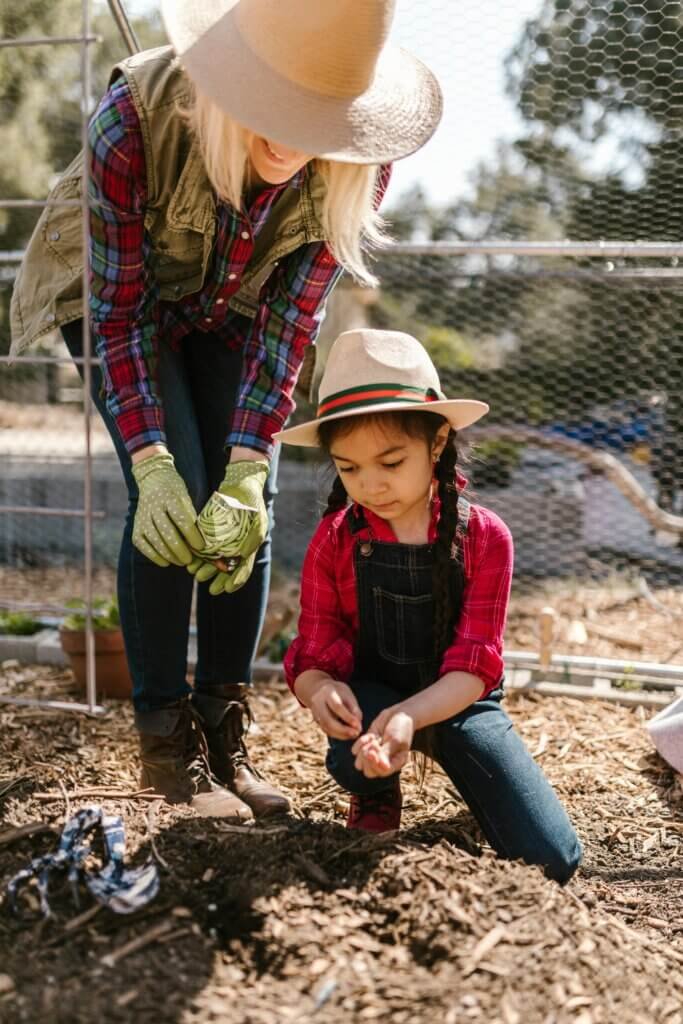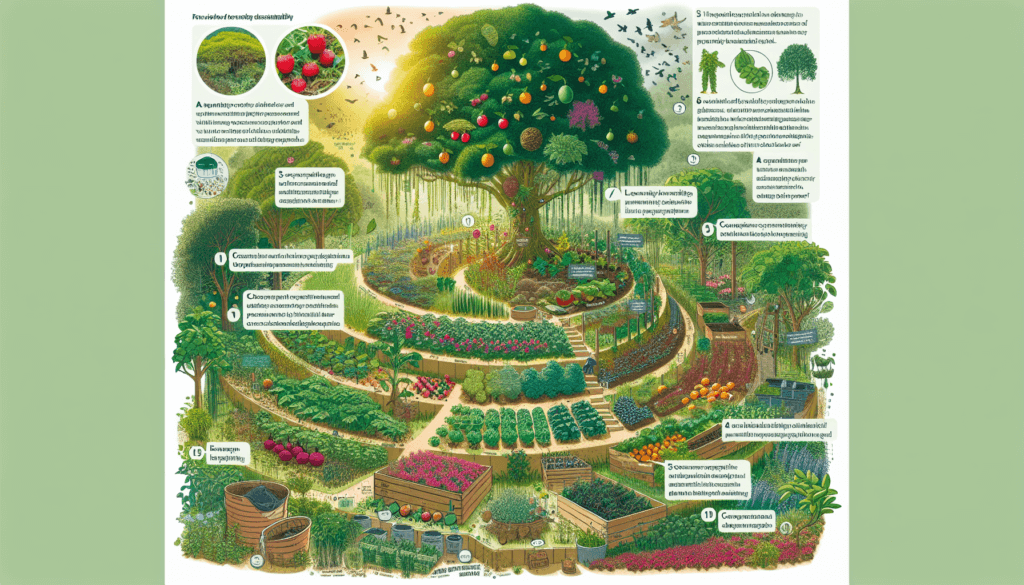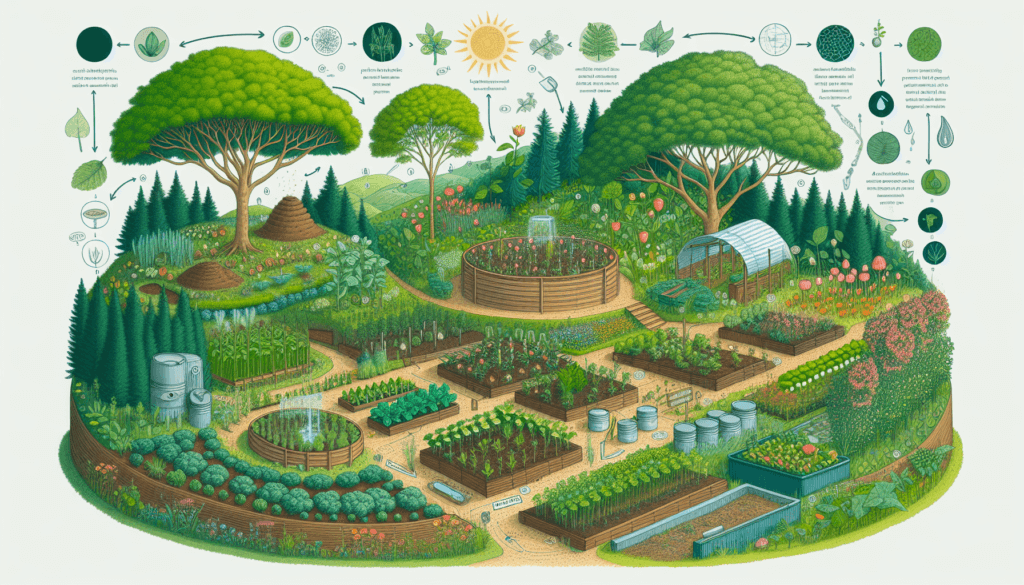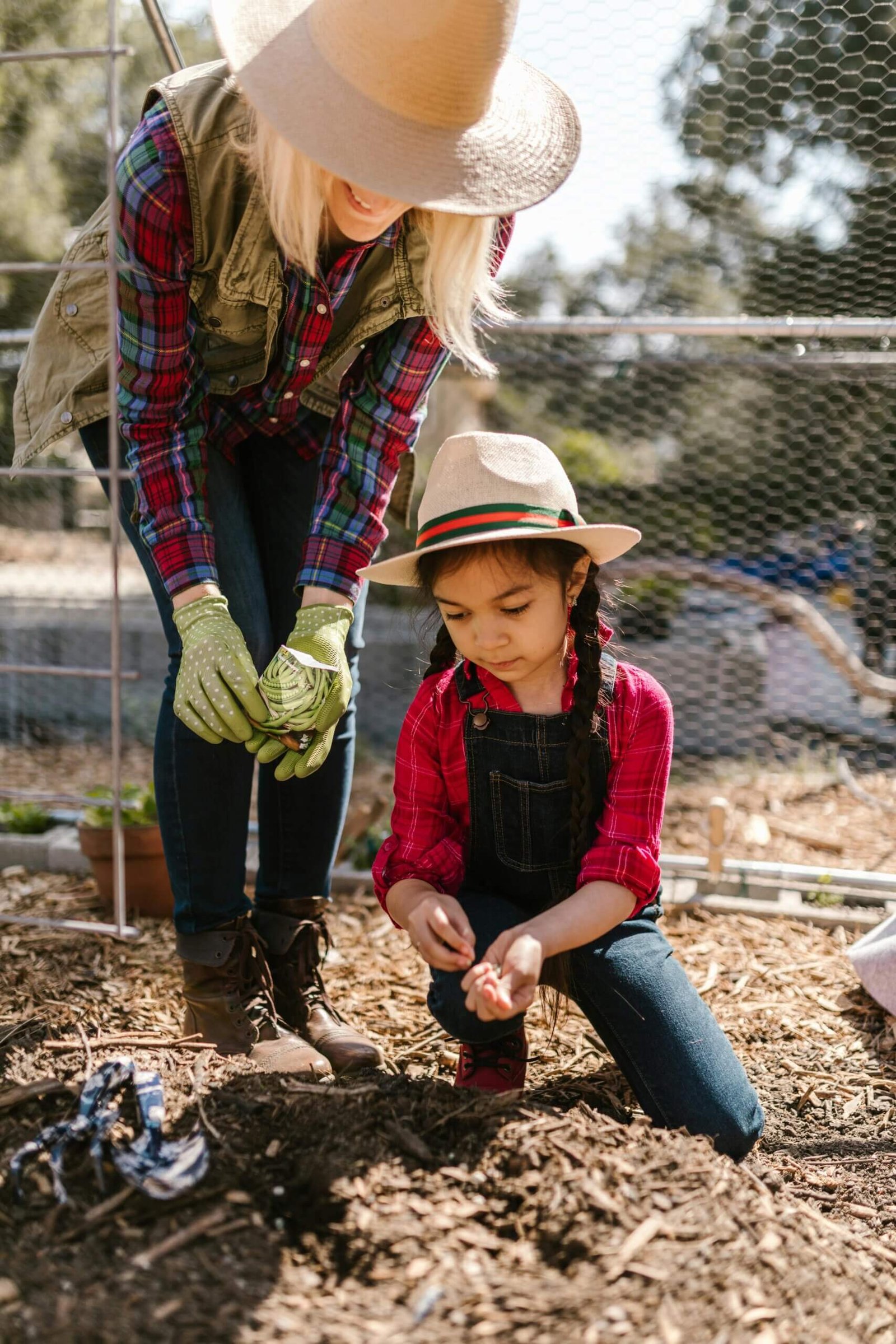Imagine transforming your backyard into a flourishing oasis, filled with a bountiful harvest of fruits, vegetables, and herbs that you can enjoy all year round. Starting a food forest sustainably is not only a gratifying experience but a mindful approach to sustainable living. By creating a natural ecosystem that mimics a forest, you can cultivate a diverse range of plants that work together harmoniously to provide food, shade, and shelter for both humans and wildlife. In this article, we will explore the essential steps and considerations to successfully start your own food forest sustainably, ensuring a thriving and eco-friendly haven right in your own backyard.

Designing the Food Forest
Designing a food forest involves careful planning to maximize the productivity and sustainability of the system. The first step in this process is selecting the right site for your food forest. Ideally, you should choose a location that receives ample sunlight and has well-drained soil. Additionally, consider the proximity to water sources for irrigation purposes.
Once you have identified the site, the next important step is analyzing the soil. Understanding the composition and fertility of the soil will help you select the appropriate plants for your food forest. Conduct a soil test to determine its pH level and nutrient content. This information will guide you in improving the soil quality later on.
Choosing the right plants is crucial for a successful food forest. Opt for native species or perennial crops that are well-suited to the local climate and soil conditions. These types of plants are usually more resilient, require less maintenance, and provide a multitude of ecological benefits.
Creating a planting plan will help you organize and optimize the space in your food forest. Consider the various layers of vegetation, including canopy, understory, and ground cover plants. Designing a diverse and balanced ecosystem will ensure better utilization of resources, improved pest control, and increased productivity.
Preparing the Site
Preparing the site is an important step in establishing a food forest. Start by clearing the area of any existing vegetation, including weeds and grass, to make space for your selected plants. This can be done manually or with the help of appropriate tools such as a shovel, hoe, or weed trimmer.
Building raised beds is an effective way to maximize growing space and improve drainage in your food forest. Construct raised beds using untreated wood or other suitable materials, ensuring they are wide enough to accommodate the root systems of your plants.
Improving soil fertility is essential for the long-term success of your food forest. Add organic matter such as compost or well-rotted manure to enrich the soil with essential nutrients. Additionally, consider incorporating cover crops to improve soil structure and prevent erosion.
Installing irrigation systems will help ensure that your plants receive adequate water throughout the growing season. Choose a system that is appropriate for the size and layout of your food forest. Drip irrigation or soaker hoses are efficient options that minimize water waste.
Implementing Sustainable Practices
Implementing sustainable practices in your food forest is not only beneficial for the environment but also for the health and productivity of your plants. One important aspect is organic pest control, as it avoids the use of harmful chemicals. Encourage natural predators like ladybugs, birds, and beneficial insects to control pests naturally.
Companion planting involves strategically placing plants that have mutually beneficial relationships. For example, planting marigolds near tomatoes can deter pests, while beans can provide nitrogen for leafy greens. By employing this technique, you can maintain a healthier and more balanced ecosystem within your food forest.
Mulching is another sustainable practice that has numerous benefits. By applying a layer of organic mulch, such as wood chips or straw, around your plants, you can suppress weed growth, conserve soil moisture, regulate soil temperature, and improve soil fertility as it decomposes.
Water conservation methods are crucial in a sustainable food forest. Collecting rainwater in barrels or using a drip irrigation system reduces water waste. Additionally, consider implementing techniques like swales or contour planting to capture and retain water, preventing runoff and promoting infiltration into the soil.
Planting and Establishing the Food Forest
After all the necessary preparations, it’s time to start planting in your food forest. Depending on your preference and the suitability of the plants, you can either seed them directly into the soil or transplant them from containers or seedlings. Follow the recommended spacing and planting instructions for each species.
Pruning and training your plants is important to maintain their health and shape. Regularly remove dead or diseased branches to promote plant vigor and prevent the spread of diseases. Train climbing plants onto trellises or other support structures to optimize space and airflow.
Protecting young plants from pests, harsh weather conditions, and animal damage is essential for their survival. Use physical barriers such as cages, fences, or netting to deter animals like rabbits, deer, or birds. Consider using organic pest repellents if necessary.
Creating wildlife habitats within your food forest is beneficial for biodiversity and ecosystem balance. Incorporate features such as birdhouses, bat boxes, or pollinator-friendly plants to attract and support a variety of wildlife. These creatures can aid in pest control, pollination, and overall ecosystem health.

Maintaining the Food Forest
Maintaining your food forest is an ongoing process that involves various tasks to ensure its health and productivity. Regular weeding is necessary to prevent competition for resources and reduce the likelihood of pests and diseases. Apply mulch around your plants to suppress weed growth and retain moisture.
Watering your plants appropriately is essential for their growth and productivity. Monitor soil moisture levels and irrigate when necessary, ensuring not to overwater or underwater. Consider using rainwater or graywater for irrigation when possible to further conserve water resources.
Fertilizing your plants and maintaining soil fertility is crucial for long-term success. Use organic fertilizers or compost to provide necessary nutrients without harming the environment. Regularly test the soil to determine any deficiencies or imbalances, and adjust your fertilizing regimen accordingly.
Tree care and pruning are important for the health and structure of your food forest. Properly maintain your trees by removing dead, damaged, or crossing branches. Prune them to improve airflow and sunlight penetration, promoting overall plant vigor and fruit production.
Harvesting and Utilizing the Food Forest
Understanding the optimal harvest times for your crops is essential to ensure peak flavor and nutritional value. Harvest fruits and vegetables when they are ripe, avoiding excessive delay or premature picking. Refer to specific plant varieties for guidance on harvest readiness.
Proper harvesting techniques are crucial to minimize damage to the plants and maximize yield. Use sharp, clean tools to cut or pick produce, avoiding bruising or tearing. Handle harvested items gently to prevent damage and store them appropriately to maintain freshness.
Processing and preserving excess produce from your food forest is a great way to extend its usefulness. Consider techniques such as canning, freezing, dehydrating, or fermenting to store surplus fruits and vegetables for future consumption. This allows you to enjoy the bounty of your food forest all year round.
Sharing surplus produce with friends, family, or the local community fosters a sense of interconnectedness and promotes food security. Organize community events or participate in local food-sharing initiatives to ensure that the abundance of your food forest benefits others as well.

Promoting Biodiversity
Introducing native plants into your food forest ecosystem is a powerful way to promote biodiversity. Native plants are adapted to the local environment and provide habitat and food sources for native insects and wildlife. They also enhance the natural beauty of your food forest.
Attracting beneficial insects, such as ladybugs, bees, and predatory wasps, helps control pests naturally and supports pollination. Planting diverse nectar and pollen-rich flowers, incorporating insectary plants, or providing nesting sites can entice these beneficial creatures into your food forest.
Encouraging wildlife diversity contributes to the overall health and balance of your food forest. Provide various habitats, such as water sources and nesting areas, to attract a range of animals like birds, bats, frogs, and toads. These creatures will further aid in pest control and contribute to the ecosystem’s equilibrium.
Creating microclimates within your food forest can expand the range of plant species that can thrive in your space. Utilize the natural features of your site, such as slopes or buildings, to create pockets with different sun exposure or temperature variations. This allows you to grow a wider diversity of plants in your food forest.
Creating a Community Food Forest
Engaging the community is an excellent way to share the benefits of your food forest and foster a sense of unity. Organize workdays or events where people can come together to learn, help maintain the food forest, and harvest the abundance it provides.
Share your knowledge and skills with others who are interested in establishing their own food forests. Offer workshops or classes on various topics such as permaculture, organic gardening, or sustainable food production. By doing so, you contribute to the wider adoption of sustainable practices in your community.
Establishing sustainable governance models for your community food forest ensures its continuity and long-term success. Create a governance structure that allows for community participation, decision-making, and maintenance responsibilities. This shared ownership fosters a sense of responsibility and promotes sustainability.

Adapting to Local Conditions
Consider the climate factors of your region when planning and maintaining your food forest. Choose plant species and varieties that are resilient and well-suited to the specific climatic conditions of your area. This will help maximize plant health and productivity in the face of regional weather patterns.
Choosing resilient plant varieties, especially those adapted to local conditions, is crucial for the long-term success of your food forest. Select plants that are disease-resistant, heat-tolerant, or cold-hardy depending on your climate. This ensures that your food forest can thrive even in challenging situations.
Adopting cultural practices specific to your region can further enhance the success of your food forest. Research traditional farming or gardening techniques that have been practiced for generations in your area. These practices have often evolved to adapt to local conditions and can provide valuable insights for your own food forest.
Managing extreme weather events is essential to protect your food forest from potential damage. Take proactive steps to minimize risks, such as installing windbreaks or providing shade during heatwaves. Consider creating contingency plans for emergencies, such as heavy rains or droughts, to safeguard your food forest.
Continual Learning and Improvement
Continual learning and improvement are vital for the ongoing success of your food forest. Monitor and observe your food forest regularly to identify any issues or opportunities for improvement. Keep a journal to record your observations, successes, and challenges.
Experiment with different techniques and strategies within your food forest. This allows you to evaluate their effectiveness and adapt them to suit your specific needs and conditions. Embrace a mindset of curiosity and innovation, always seeking new ways to enhance the sustainability and productivity of your food forest.
Update and evolve your food forest based on your observations and experimental findings. Adjust your planting plans, irrigation methods, or pest control strategies if necessary. By staying flexible and responsive, you can continually optimize your food forest to achieve the best results.
Seek professional advice when needed to enhance your knowledge and skills. Join local gardening clubs, attend workshops, or consult with experienced horticulturists or permaculture experts. Their expertise can provide valuable guidance and support in the development and maintenance of your food forest.
In conclusion, starting a food forest sustainably requires thoughtful planning, diligent preparation, and ongoing maintenance. By considering factors such as site selection, soil analysis, plant diversity, and sustainable practices, you can establish a thriving ecosystem that provides abundant food, supports biodiversity, and fosters community engagement. Embrace the journey of creating and continually improving your food forest, and enjoy the sustainable benefits it brings to both you and the environment.



